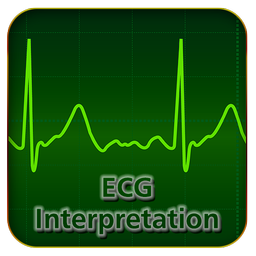
| نصب | +۱۰۰ |
| از ۰ رأی | ۰ |
| دستهبندی | پزشکی |
| حجم | ۵ مگابایت |
| آخرین بروزرسانی | ۸ خرداد ۱۴۰۲ |

| نصب | +۱۰۰ |
| از ۰ رأی | ۰ |
| دستهبندی | پزشکی |
| حجم | ۵ مگابایت |
| آخرین بروزرسانی | ۸ خرداد ۱۴۰۲ |
تصاویر برنامه






معرفی برنامه
Electrocardiography (ECG or EKG*) is the process of recording the electrical activity of the heart over a period of time. A typical ECG tracing is a repeating cycle of three electrical entities: a P wave (atrial depolarization), a QRS complex (ventricular depolarization) and a T wave (ventricular repolarization). The ECG is traditionally interpreted methodically in order to not miss any important findings.
In normal condition a heart rate is between 60 to 100 beats per minute. Below 60 heart rate is said to be bradycardic and a rate faster than 100 beats per minute is said to be tachycardic. Many athletes can have a normal resting heart rate of less than 60 beats a minute.
The heart's electrical axis is the general direction of the ventricular depolarization wavefront (or mean electrical vector) in the sagittal plane (the plane of the limb leads and augmented limb leads).
An ECG tracing is affected by patient motion. Some rhythmic motions (such as shivering or tremors) can create the illusion of cardiac dysrhythmia.
برنامههای مرتبط
دیگران نصب کردهاند
برنامههای مشابه






























